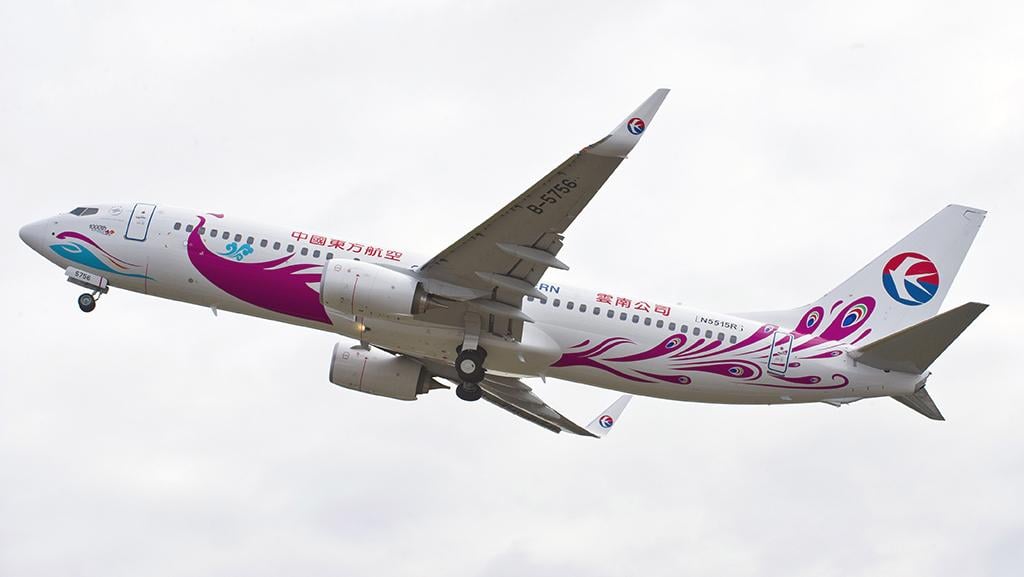Opinion: Big Questions About The World’s Largest Jetliner Export Market

The change in U.S. policy toward China that began under the Trump administration has accelerated under President Joe Biden. Kurt Campbell, Biden’s top China advisor, recently stated: “A period that had been broadly described as engagement has come to an end,” and “the dominant paradigm is going to be competition.” At the recent G7 summit in the UK, the U.S. moved to create a unified Western effort to counter China on a number of political and economic fronts, reportedly with some success. The U.S.-EU agreement on ending the World Trade Organization jetliner subsidy dispute also promises greater harmonization and limits China’s ability to play them off against one another.
These developments are the latest indicators that decades of growing economic engagement between China and the West are reversing. The impact on jetliner markets will be profound.
The past few years have seen ominous indicators of this reversal. As the chart above indicates, foreign direct investment between the U.S. and China fell about 75% between the 2016 peak and 2020. Aerospace trade between the U.S. and China has also collapsed, according to the U.S. International Trade Commission, falling to just $5.1 billion last year from $19.2 billion in 2018.
Meanwhile, China’s economy and society are becoming less a fast-growth market economy and more a government-run and -managed one. Aviation indicators reflect this change as well, with an air travel demand slowdown that predates COVID-19. In October 2018, Chinese domestic traffic grew 12.2%, and most of the past few decades have seen this kind of double-digit growth. But by October 2019, this number fell to 5.3%.
Jetliner deliveries have fallen, too. China’s share of global aircraft deliveries peaked at 23% in 2018 but dropped to 15% in 2019 and 12% in 2020. Some of this was due to the Boeing 737 MAX production halt, although notably, Airbus deliveries also declined.
Beyond the numbers, aviation relations between the U.S. and China have deteriorated. Unlike most other major regulatory agencies, the Civil Aviation Administration of China has not recertified the 737 MAX, and it has not even mentioned a timeframe for doing so. Meanwhile, the U.S. has put most Chinese aerospace companies on a military end-user list, which draws into question shipments of Western systems for China’s national jetliners.
The future of the China market can be outlined with three possible scenarios. The best-case scenario would be a negotiated restoration of the peaceful coexistence seen during the George H. W. Bush, Clinton, George W. Bush and Obama administrations. Chinese orders for Airbus and Boeing jets would resume, the 737 MAX would be recertified in China, and the U.S. would clarify and liberalize its stance on tech exports for China’s national jetliners.
The worst-case scenario is U.S.S.R. 2.0. In this, China’s aviation ecosystem would decouple from the West as quickly as possible. A socialist economy would produce slower growth rates. Orders for Western jets would stay low, with a greater reliance on used jets, which in many cases are already financed by Chinese lessors. China’s national jets would become fully indigenous, with imported Western engines and systems replaced by home-grown, inferior ones, an expensive process that would play out over the next 10-15 years, at least.
The third scenario would be a middle course: Everyone would just kind of muddle through, with slower growth rates in China affecting jetliner demand. Gradually, China would recertify the 737 MAX, and gradually, the U.S. would clarify its stance on component exports for Chinese jets. But China would move to indigenize its products as quickly as possible and mandate that its carriers take those airplanes.
The U.S. ability to persuade its allies to form a common front in negotiating with China is pivotal to which scenario will ensue. If they join forces, there is a better chance the first scenario will unfold, as China’s government realizes it must either change its ways or completely decouple. If the U.S. and its allies do not join forces, China can simply lean away from the U.S. and reward Airbus with a much greater share of orders.
There is a great deal at stake for the aviation industry. Once or twice a decade, it is hit by an exogenous shock—a pandemic, war, terrorist attack or recession typically precipitates a jetliner-market bust cycle lasting 2-3 years. But unless the first China scenario plays out, the jetliner industry will be hit by a new kind of permanent shock, with lasting damage to—and perhaps the end of—the jetliner industry’s largest export market.






Comments
Consider the Chinese space program. They have landed on the far side of the moon, have a rover on Mars and are building a space station in LEO. Chinese universities also produces eight times as many STEM graduates as the US does.
The Chinese domestic aviation market is large enough to support a national aviation industry by itself. Throw in creative "Belt and Road" financing and COMAC will be able to sell a lot of C919s to other countries. If the CCP decides that manufacturing world class airliners a priority, it will happen.
Underestimate China at your peril.
Then there is the economic viability: The Il-62 weight was 25% over that of the VC10 with an impossible wing leading edge design, the Tu 154 weighted half more than a B727 or a Trident, and Russia had a long tradition of in aircraft design which China totally lacks. Russia makes some of the world's best military planes but they are ruinous to operate. China is nowhere near.
The debacle of the Sukhoi Superjet 100 (cf Interjet in Mexico) shows that there is a long distance between the drawing board and economic viability. The Superjet 100 was not a bad aircrat once you discounted the 2 to 1 ratio of maintenance to operations.
It is far easier for China to be a political or even military enemy that to be come a competitor as an aircraft exporter.
Lenin's famous prediction "The capitalists are so dumb that they will sell us the rope to hang them" still lives.